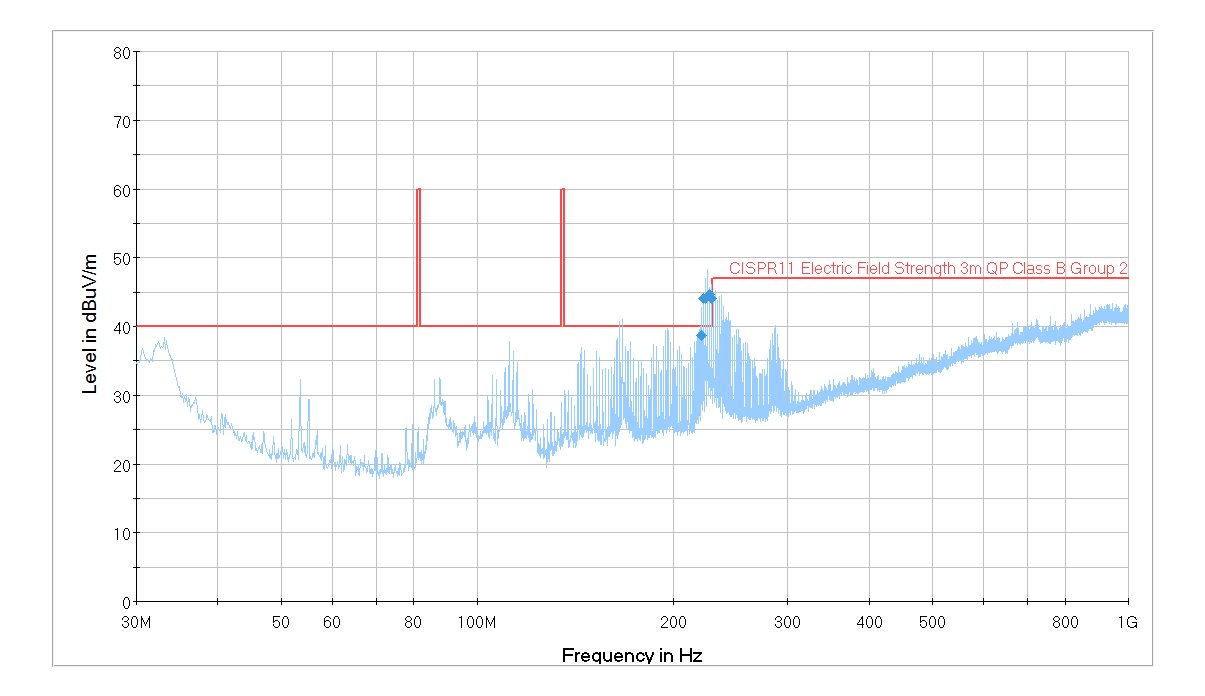Other Parts Discussed in Thread: PMP4397
Hi,
I design a portable product with BQ24133, but it fails to pass the radiated emission test. The result and my circuit are as follows:
There is an adapter with a 1.3m long power wire to plug in my product to recharge the battery in it. As the emission exceeds the threshold at about 225MHz and 225MHz corresponds to about 1.3m wavelength, I guess the long wire on the adapter forms an antenna. I search the forum and find several posts, and the suggestions are follows: 1) add a resistor at BTST pin; 2) add snubber circuit at SW pin. Will these work for my problem? or is there any other solution?
Is isolating the AGND and PGND necessary? If so, the reference terminal of the battery should be connected to PGND. The battery powers the rest part of the system, then how should I isolate their grounds?


